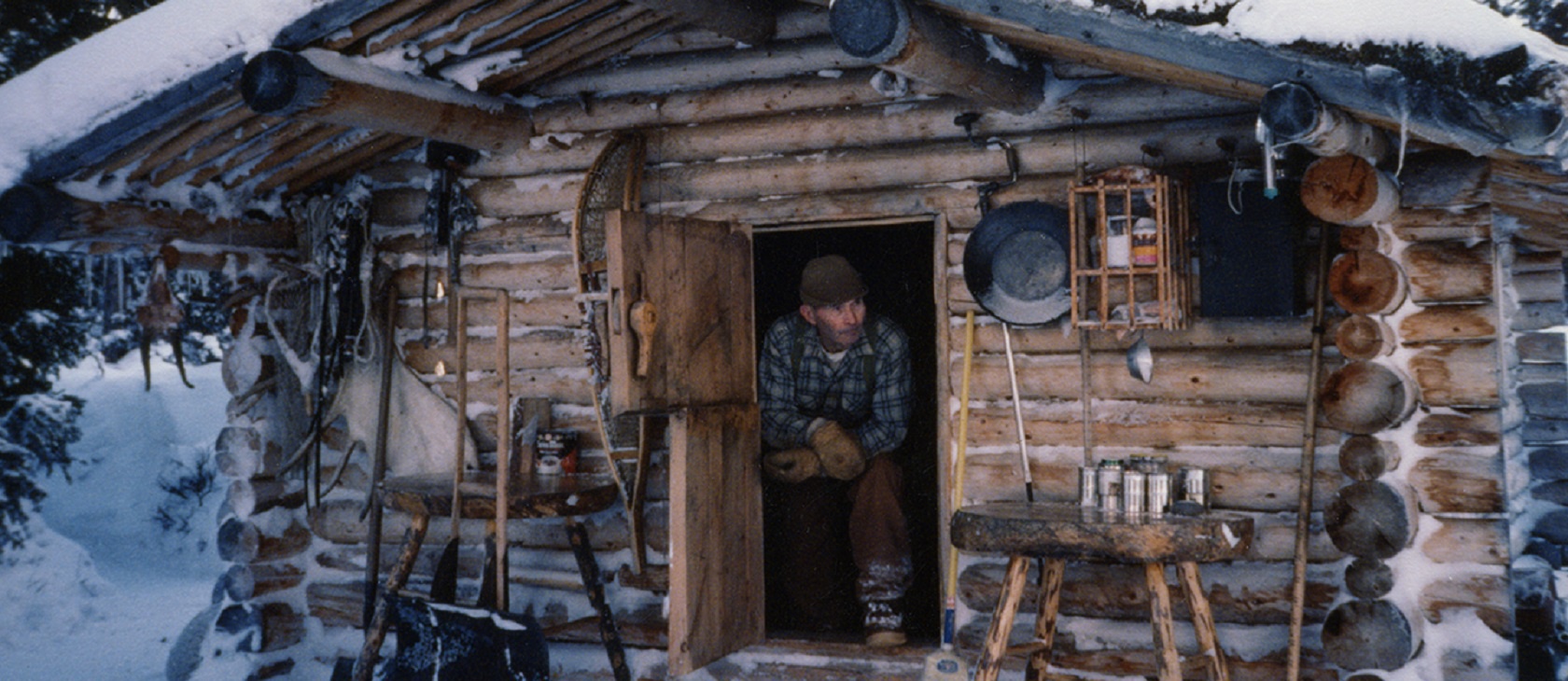One of the more intriguing shows that PBS runs occasionally (especially during its pledge drives) is the documentary Alone in the Wilderness, which chronicles the exploits of Dick Proenneke, who retired in 1967 to Twin Lakes, Alaska. In this remote location Proenneke builds a cabin by hand, and the documentary captures his labors with a variety of hand tools and resources taken from the surrounding countryside. Proenneke’s adventures are the closest real-life analog to the fictional adventures recorded in classic tales like Robinson Crusoe (1719) and The Swiss Family Robinson (1812), or more contemporary examples like the TV show Lost (2004-2010).
On a superficial level Alone in the Wilderness taps into the deeply romantic vision of the human person single-handedly carving out an existence in the harsh and threatening natural world, “red in tooth and claw” in Tennyson’s words. And particularly in a place like Alaska, Proenneke works in a visually stunning setting, albeit one with an extreme climate often unfriendly to human habitation. By all appearances, Proenneke really is “alone” in his wilderness, and his achievements are indeed remarkable. Over the course of the documentary we see the cabin take shape, and Proenneke’s talents and tenacity are on full display. This is a man of significant character and ability.
And it is in recognizing these abilities that we begin to see that Proenneke – even though there isn’t another human being around for many, many miles – isn’t really alone. He does have some ongoing and periodic contact and help from the outside world. But even beyond this sort of mundane if only sporadic contact with others, when he moves to Twin Lakes, Proenneke brings with him a lifetime of experience and training. He had learned through hard work in the military, and then later as a renowned professional mechanic, the skills that would allow him not merely to survive but in fact to thrive in such adverse conditions. Proenneke represents in his own person the gifts and talents given to him by God, as well as the wisdom acquired and developed through his own efforts and the education afforded him by a life in the civilized world. If we take this deeper look, we soon realize that Proenneke isn’t really starting from nothing when he retires. He is only seemingly alone in the wilderness.
Economists often refer to the many intangibles represented in Proenneke’s accumulated knowledge, skills, and talents as human capital. But that term rings rather cold in our ears, and doesn’t really do justice to the creative dynamism and the mysterious matrix that lies at the heart of the human person created in the image of God. Each individual person represents a curious mixture of the cultural advances and achievements of the civilization into which they are born and the engrafted dispositions and possibilities given to that person by God at their birth. We are limited in what we can do in this life, not only by material and temporal constraints like our physical strength and our need for periodic rest (and indeed, our eventual death), but also by what those who have come before us have been able to accomplish in the time given to them. Just as Proenneke doesn’t really start from scratch when he arrives in Twin Lakes, each new generation doesn’t start over anew in the work of cultivating this world.
The Reformed theologian Abraham Kuyper helpfully describes this developmental process of civilization, particularly with respect to scientific advances, using the image of a structure built successively through the efforts of individuals scattered across time and space. Kuyper describes a kind of “temple” which is “constructed without a human blueprint and without human agreement.” Instead, the structure “seems to arise by itself,” as each person “quarries his own little stone and brings it forward to have it cemented into the building. Then comes another who removes that stone, refashions it, and lays it differently.” As this process is repeated over and over again across generations, with one person taking this bit away, adding something a bit different, and rearranging something else, “in the course of centuries, out of this apparently confused labor, a temple emerges, displaying the stability of architecture, manifesting style, and already generating speculation about how the entire building will ever be completed.” Kuyper argues that the spontaneity of this work is evidence that, even though unplanned by any individual person, there is in fact a divine providential power at work. “It must be acknowledged and confessed that all this labor was led and directed unseen by an Architect and Artisan whom no one saw,” he writes. “We must confess that God Himself developed His own divine plan for this construction, created the geniuses and talents for implementing that plan, and directed the labor of everyone and made them fruitful, so that what He wanted and still wants would indeed become reality.”
Kuyper’s image of a coherent structure of science emerging out of the generations of scientific endeavor applies equally well to the broader phenomenon of cultural and civilizational development. Scientific and technological advances are significant aspects of a culture’s engagement with the created order, and just as the fruits of technical expertise and knowledge are communicated across generations, so are spiritual, moral, political, and all kinds of other endowments passed on from forebears to their progeny.
When we look around us and see things as common as cars and power lines and pencils and smart phones, it is critical to recognize in a very real sense that no single person or even groups of people alive today built them de novo. All of these things are made possible by the achievements and innovations of those who have long since passed away and yet whose legacies continue to provide us with great blessings.
There is in this way an intergenerational infrastructure to human civilization that engenders a significant responsibility for each successive generation. We have been given much, and as Jesus’ teaching about stewardship makes clear, much is therefore expected of us (see Luke 12:48). As the example of Richard Proenneke shows us, no one is ever really alone in the wilderness, and the best response to this reality is to gratefully take what we have been given and apply it in faithful and responsible labor to the tasks at hand.





